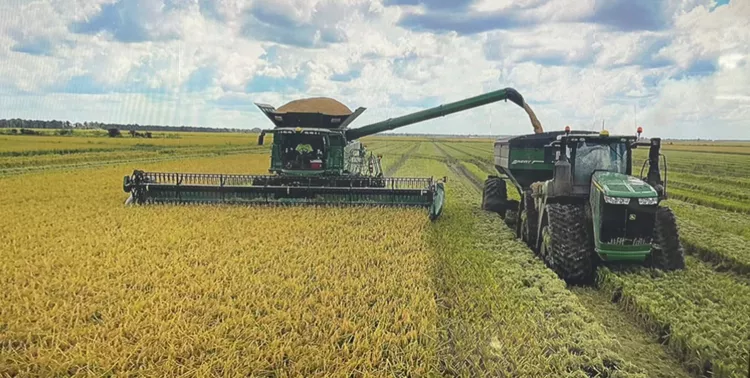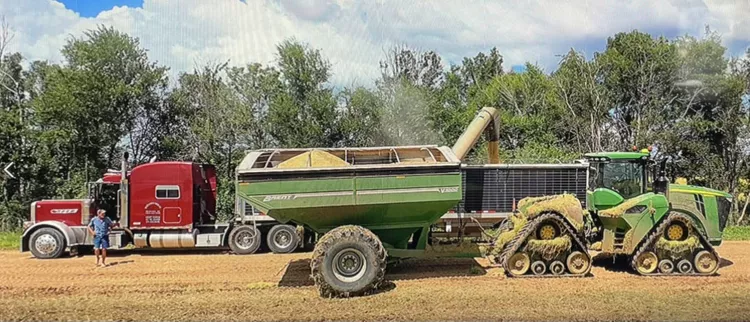Across the country, XtremeAg farmers are relying on data to plan for the 2024 growing season. Finalizing crop rotations and seed varieties is top of mind this time of year.

Matt Miles - McGehee, Arkansas
Matt Miles is a fourth-generation farmer in southeast Arkansas. Miles farms 3,500 acres of corn, 3,500 acres of soybeans, 1,500 acres of cotton, and 1,500 acres of rice.
When I was a kid, after harvest and equipment was cleaned up, the following year crop plans weren’t even discussed until spring. In today’s world, not so much!
The days of harvest cleanup and “forget about it until spring” are long gone; the most successful farmers I know never stop.
Harvest is now just a phase in our operation. It is the first step in providing data for the next crop. As we have adapted to the new technology, we now have solid, proven data to begin making decisions for the future. The seed companies have been hammering us for early orders for seed so that they know what to have available. We are also spitting out results on varieties and trials to find the sweet spots that will make our operation more successful.

Farming in the Delta provides us a multitude of options for crop mixes. For us, it's not merely a decision about how many acres of corn and soybeans to plant, and which varieties performed best on our farm. Instead, it involves considering factors such as the prices of the five to six crops we grow, as well as their return on investment, while also balancing the value of crop rotation.
We try to have all this information confirmed and decisions made by the first of January. We know that nine out of 10 years, it is going to change somehow. We try and stay flexible up to planting to adapt to surprises that we didn’t account for.
Merry Christmas and Happy New Year from Miles Family Farm.
Chad Henderson - Madison, Alabama
Chad Henderson is a fifth-generation farmer in Madison, Alabama. Henderson Farms includes over 8,000 acres of dryland and irrigated corn, dryland soybeans, wheat, and dryland and irrigated double-crop soybeans. When not farming, Chad can be found carrying on another proud family tradition as a drag racer for Henderson Racing.
As far as corn is concerned, we have it stored in bins. We are using moisture sensors to monitor the bins to ensure the corn doesn’t spoil. We plan to sell some of the corn at the beginning of the new year to empty these bins.
Regarding planting, we are beginning to select corn hybrids and determining which varieties to plant. We are strip-tilling our corn acres and performing deep tillage on areas designated for strip/deep till corn.

The wheat has finally emerged. We planted it under dry conditions and have approximately our usual acreage of wheat. A recent inch of rain has helped the wheat to emerge nicely. Our next step is to apply a robust herbicide program to the wheat in the coming week.
We are holding several meetings with everyone on the farm to review yield data. We will be talking about a lot of this on our next XtremeAg webinar, Thursday, Dec. 14.
Johnny Verell - Jackson, Tennessee
Johnny Verell is a third generation farmer in western Tennessee. He farms corn, soybeans and wheat.
This week on the farm, the guys started hauling grain to the elevators on our December contracts. This is always the time of year that we do that. Finding time that the elevators are open is still a challenge, even with harvest being over. Sometimes the companies that run the elevators are doing their own repairs and maintenance this time of year, so we have to work with their schedule. We have also been servicing our equipment. We're doing repairs and updates on our systems so that they are ready to go for next year.

I was fortunate enough to have time to go on a trip last week. A few of my friends and I went to the mountains of Mexico to go hunting. We try to go somewhere different every year. We went for Audad Sheep hunting. It was truly a trip of a lifetime. I have never experienced anything like that. We stayed at a really nice hunting camp and our mode of transportation for the week was horseback. I was so surprised by the way the horses were able to climb steep mountains, especially with all of the rocks. We finally got up to the top, and me and another guy got something the first night. We were excited until we realized we would then be sleeping on top of the mountain with no fire or tent, so we eventually ended up walking down, which took us about 10 hours.

